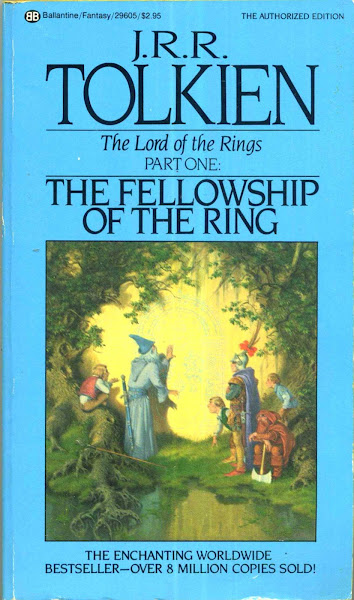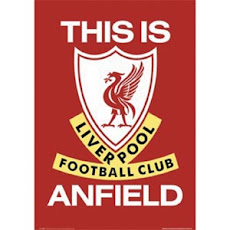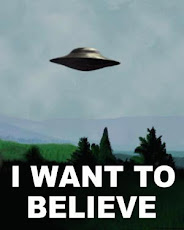I wrote this three years ago during the 80th Anniversary of the Blue Babble Battalion. It was originally posted on the ateneo.edu site. I have since made a few revisions. I am re-posting this for the benefit of some people and since it kind of looks good alongside the Ateneo Heritage Series.
My brother was a member of the BBB and it sure is nice to see a nephew of mine in the Grade School battalion.
Harnessing the Thunder
80 years of the Blue Babble Battalion
by rick olivares
 At the corner of Vito Cruz and Taft sits the Sistine Chapel of Philippine basketball, the Rizal Memorial Coliseum. Also across that busy intersection some 60 years ago was another hotbed of hoops, a barber shop.
At the corner of Vito Cruz and Taft sits the Sistine Chapel of Philippine basketball, the Rizal Memorial Coliseum. Also across that busy intersection some 60 years ago was another hotbed of hoops, a barber shop.Just like in the venerable old hoops house, there too was equal parts cheering and the gnashing of teeth for this is where bettors gambled, counted what their winnings could buy, or cried a river of tears.
But on this particular day in 1947, in a place where PMT (Philippine Military Training) haircuts were the order of the day, the shop was full to bursting with humanity just like the Rizal Memorial Coliseum. NCAA basketball was back way big time after a six-year hiatus because of the war.
The defending champions, the Ateneo Blue Eagles (who were the de facto champs since they won the last pre-war title in 1941 behind Tony Montenegro, Simon LaO and Bobby Jones) of Baby Dalupan, Moro Lorenzo, and Joe Concepcion (who would later go on to be the Philippine Basketball Association’s chief statistician) were up against the ever-dangerous Mapua Cardinals.

The game was hotly contested. And in the final seconds, the Hail Mary five buckled and lost by a whisker. Chief Babbler Jose “Totoy” Avellana was incredulous at the loss. Time was when the team lost, the cheerleaders blamed themselves and not the players or anyone else for the defeat. They always thought that perhaps they didn’t cheer hard enough, will the team enough to summon that last One Big Fight. It was as if they didn’t do their job.
With a look of disgust on his face, Avellana raised his hands and like Moses parting the Red Sea, the shell-shocked gallery of Ateneans rose as one launching into wave after wave of cheers as if the game were only in its dying minutes.
Outside at the barber shop, those who had bet for the Cardinals thought that Ateneo had won because the old hoops joint was shaking to its very foundation with cheers and yells. And the cheering continued from student and Jesuit alike non-stop for 10 minutes until the coliseum management decided to literally pull the plug on the Ateneans forcing them to go home after the lights went out.
The First Volley
The days of thunder began in 1925 when Ateneo’s Fr. Austin Dowd S.J. sponsored cheering as a means to inspire its athletes. After dominating athletics in NCAA’s forerunner, the Liga Catolica, Ateneo found itself struggling to win when the local version of the American tournament was founded a few years later.
Fr. Dowd recalled how American colleges made use of cheering to bolster their teams’ morale so he introduced to the Philippines a new art form, cheering. He recruited Leon Ma. “Rah-jah” Guerrero (who would later go on into Foreign Service), “Crown Prince” Elpiforo Cuna, and Jumpin’ Jess Paredes (who was in the fatal plane crash that claimed the life of President Ramon Magsaysay a couple of decades later) to lead the Ateneo gallery in cheering the Blue and Whites (as the Ateneo teams were known then) of Eddie Silos, Eddie Gana and the Catala brothers to victory against La Salle in a game witnessed by 5,000 fans.
It was a huge equalizer. For years, Ateneo dominated their first great rival, the University of the Philippines Maroon and Greens (as they were known then). But beginning 1924, UP had overtaken their rivals from Intramuros when the game’s arguably first dominating big man, Guillermo Velez graduated from Ateneo. UP had beaten Ateneo five straight times and looked pretty unbeatable behind the great Johnny Schlobohm. But on October 16, 1926, spurred on by the thunderous yells of “Guard tight ‘Teneo” (This was the older version of today’s “Get that ball.”
The other popular yell was “Shoot Ateneo” of which today’s off shoot is, you guessed right, “Shoot that ball.”) from its gallery, the Blue and Whites staged a furious rally to upend the Maroon and Greens at the buzzer 32-31.
Before long, the other schools, most notably UST, formed their own cheering sections. Still not done in finding a way to give Ateneo every advantage, Fr. Dowd introduced the Pep Band to augment its Princes of Personality as the cheerleaders were then fondly called. In the first ever cheering championship, Ateneo beat UST (which first made use of colorful pennants) in what was hailed then as “the battle of the century.”
Ateneo’s cheering was so impressive that A.R. Cranston, a shortwave radio listener from far away New Zealand caught one broadcast and commended the school for their thrilling war cries.
“You never heard the drums back in those days,” said a proud Fr. Bert Ampil, himself a cheerleader in his student days. “It was all voice that hit with such dynamic force. The Ateneo was an all-male school then. Add to that the combination of the Arneeow accent and being led by sports conscious American Jesuits (of whom quite a few were All-Americans during their time), we cheered with so much gusto and bravado.”

“It wasn’t a show during those days,” added Jesse Paredes who followed his father Jess’s footsteps in the post-war Ateneo. “We went about our business, sure with flair, but as Fr. Edgar Martin liked to say back then, ‘If you’re down on the court for more than a minute, you better get ready to play basketball.’ The Blue Babble Battalion was the crowd, not the cheerleaders. That’s why it’s a battalion.”
And when that thunder from the bleachers was properly harnessed, woe to opponents whoever they were and however strong they were for the Blue Babble Battalion gave Ateneo teams that adrenaline surge and for a badly needed finishing kick.
During the 1929 title loss to UP, the Blue and Whites’ top gun Jess Suarez admitted that the non-stop cheering of “Fight Fight Blue and White” was responsible for his aerial exploits that kept Ateneo in the game and thrilled the crowd to the very end.
PLDT Chairman Manuel V. Pangilinan, during his high school days in San Beda remarked how he and his fellow Bedans hated “those endless and God-awful ‘Fabiliohs’” that sprung from Atenean throats and simply drowned out the combined cheers of the other schools. “It was very intimidating for us and for any opponent of Ateneo,” he would later admit.
Remarked another Atenean who still follows the team to this day, he loved it when all the other NCAA schools would band together to chant in unison “Beat Ateneo!” “We’d shut them up with a ‘Fabilioh’,” he chuckled.
“You couldn’t tell if Ateneo was winning or losing because even when our team was going down in defeat, we cheered even harder and louder,” crowed the still energetic Paredes, a Manila Standard columnist today.
On a cloudy Sunday on October 1, 1934, San Beda’s Charlie Borck and Arturo Rius wrested the league championship from Ateneo (lost most of its stars to graduation in 1933) which was gunning for its fourth straight title 48-28 at the UST gym. The hundreds of Ateneans who filled the tiny gym wept unabashedly as “Hail Ateneo Hail” broke out. And when the victorious Bedans hoisted their first ever trophy, the khaki-clad Ateneans waved their white handkerchiefs in salute to the champs.
Fishers of Men
During those early years, there were only three cheerleaders. “In order to be a cheerleader,” recalled Paredes (who was the chief warbler during the 50s), “one had to be a student leader.” Explaining further, the “leader” in cheerleader meant that he had to have leadership qualities to lead men. And he had to be that for he needed to ride the crest of a huge blue tidal wave of a couple of thousand students. He had to be someone in school whether editor of the Guidon, class president or an athlete. Sometimes it was more than enough if he was “god.”
And blasphemy aside, there was such a man in Totoy Avellana. To the post-war generation of Ateneans, Totoy was the prototype of that rah rah spirit. With his commanding voice, assertive presence and powerful personality, he strode the Loyola campus with the stature of King Eagle. Such was Avellana’s stature that one bespectacled freshman couldn’t wait for the tryout proper that he shouted his application to the cheering squad. “That was my introduction to Ninoy Aquino,” Avellana noted of that incident.

For some, they not only had to be eloquent orators and human megaphones but tunesmiths like Raul or “Rah-hul” Manglapus who composed “Blue Eagle the King” in the summer of 1938 after the school had officially chosen the eagle as its mascot. It was considered to be the last word in locally composed cheers.
On June 22, 1939, with Manglapus tickling the keys, the jumping jacks doing their thing, and a couple of sophomore AB boys leading the song, Fathers Fasy, Keane, O’Beirne, Dowd, and the faculty approved the song. And with the power of a Glenn Miller Orchestra song, “Blue Eagle the King” took not only the campus by storm but the entire archipelago.
The Filipino people were formally introduced to the song with a 30-minute performance over KZRM (DZRM today) on August 5, 1939. The song had two versions, the march version which was to be sung during games and the swing version that was to be played over the radio.
And some others simply had to be showmen hence the “Prince of Personality” tag. During a reunion years later, one classmate from the rollicking 50’s told Paredes that he remembered only two people during his school days: Ed Ocampo and Paredes (who teamed up with Emmanuel Tayag and the cart wheeling Ferdie Trinidad to form the cheering triumvirate back then).
Mhel Garrido, who was a cheerleader during the Blue Babble Battalion revival during Ateneo’s championship run in the UAAP in the late 80s, was one such showman. Because of his dusky complexion, he’d oft be the target of opposing team’s fans especially when he was wrapped up in contrasting retro white cardigans.
Perched atop the railings that would divide the sections at Rizal Memorial Coliseum, he’d not only cheer but dance (Garrido’s specialty was doing a striptease when the Ateneo band behind Jo Avila’s seductive sax would launch into that rousing instrumental of “Cherry Pink and Apple Blossoms White” or “X” as it was simply known and was a staple of cheering back then). “I just went on doing my thing until they got tired of heckling,” smiled Garrido. “Pikon talo yan.”
In a riot-marred game against La Salle on September 12, 1973 where the Blue Eagles behind Chito Mistades, Conrad Banal, and Gerry Versoza beat Lim Eng Beng’s Green Archers 71-66, the cheerleaders led by Noel Canivel, Eric Ingles, Monette Posadas, Sev Sarmenta, and Reggie Francisco nearly stole the show when they walked onto the court in barong tagalogs, slacks and leather shoes. It was quite a sight to see them launch into the swooping eagle gyrations while doing the traditional cheers. “One of the best half-time cheering shows ever,” fondly recalled an Atenean who was in school then. “And by far, the best gimmick ever. Barong tagalogs, who would have thought of that?”
And contrary to what many think, it helped to be an athlete for one to be a cheerleader. “We put in a lot time to just practicing all our moves,” said Jesse Paredes who was also a bemedalled track and swim star. “You’ve got to have the moves and the stamina.”
“With a shout with a song…”
An integral part of the cheerleaders’ arsenal was the cheers, yells, and songs that imbibed the Ateneo spirit. They added much to the voices and stomping feet by inspiring and willing our teams to victory time and again. “When you were on the bench during a game,” recalled Ole Orbeta who played with Moro Lorenzo and Chole Gaston during the luckless post-war years. “You could hear the cheers closely that they would pump you up so you couldn’t wait to go back into the game.”
“Brickety” Bert Avellana (who teamed up with “Roamin’” Romy Romualdez and “Look n’ Listen” Luke Paredes to cheer the champion teams of Bing Ouano, Primitivo Martinez and Cesar Basa) who later went on to become a celebrated filmmaker, put together a book of Ateneo cheers titled On Wings of Blue.
The small blue booklet featured all the songs and cheers as well as interesting tidbits about things Atenean such as the colors, the shield, the motto, and the mascot among many others. “We kept that booklet near and dear to us and memorized the contents just as if we were preparing for our final exams,” said Vic Sison who was Mr. Football back in the 50’s.
Even at an early age, the sacred songs and yells were drummed into school kids’ consciousness. Students in the grade school would find the lyrics of Manglapus’ “Blue Eagle the King” at the back of all their school notebooks and learned the song around the same time they memorized St. Ignatius’ Prayer for Generosity. “Blue Eagle the King” was so popular that a high school in suburban New York co-opted the song as one of their own. “If we could borrow “the Fordham Ram” for “Hail Ateneo Hail”, why couldn’t others borrow from us?” explained a proud Paredes.
One such Ateneo song that owed much to a foreign counterpart was something Fr. James B. Reuter inadvertently came upon. “We were tasked to write a graduation song when the leader of the Pep Band played me a very beautiful melody,” recalled Fr. Reuter digging deep into his encyclopedia of a mind. “I was so impressed that it didn’t take me long to finish the lyrics. Imagine my surprise when I found out that the music was inadvertently lifted from the Canadian National Anthem.”
The re-worked anthem would eventually be known as the “Graduation Hymn” and replace “Hail, Ateneo Hail” as the school’s alma mater song when the 1973 Junior Champions would sing it after basketball games while preparing for their commencement.
“Perhaps the one word that best defines an Atenean is that one cheer of the one word that conquers, Fight!” emphasized Senator Richard Gordon who once ran onto the court during his cheerleading days with a live eagle, Yum Yum, the school mascot, to thunderous cheers from the bleachers. “It’s all about that fighting spirit that the Jesuits have drummed into us.”
The Bleachers Kings
Up to the late 80s, everyone sat in the bleachers regardless of the availability of the patron seats. “That’s where the action was,” revealed Gordon. “Everyone sat there, students, the Jesuits, the faculty. Everybody.”
“It did help that back in the days that if you were caught sitting in the lower boxes, you’d better get ready for recitation from all your professors the following day,” laughed Paredes. “The scholars sat in the bleachers.”
“And back then,” added Gordon. “You never went to the game with your date. Not when there was always the threat of a rumble or getting caught by your teacher that resulted in recitation in every subject the following day.”
“Even when we’d have a game at Araneta Coliseum,” agreed Garrido, “nasa upper box and bleachers lahat. And even in a big place like that, the cheering was solid and loud.”
Not to mention infectious.
Old timers swear that during those golden days…
when Moro Lorenzo stood tall with his devastating one handed-shots,
when Rusty Cacho dared Caloy Loyzaga to block his daredevil drives,
when Bobby Littaua shattered NCAA scoring records with aplomb,
when Francis Arnaiz channeled Sonny Jaworski on his way to sports immortality,
when Chito Mistades matched Lim Eng Beng shot for shot,
when Joy Carpio waged epic battles with Abe King in the pit;
when during the dry seasons of the early 80s when Chot Reyes & company sniped away from the parking lot in those pre-three point shot days,
right up to the return to the glory years when Danny Francisco evoked memories of a young Ramon Fernandez, there were larger than life cheerleaders like Jess Paredes, Elpi Cuna, and Totoy Avellana, who harnessed the awesome thunder of the Ateneo gallery that matched the Creator’s bowling up in the sky.
These old timers swear that when the bettors and barbers from across that old hoop house along Vito Cruz and Taft looked out from the shop, they’d catch the statue of that grand and famous alumnus, Jose Rizal doing the shuffle, swooping and sweeping along to those “endless and God-awful Fabiliohs.”
As for the bettors who mistakenly paid up in 1947, no one ‘til this day knows if they got their money back.
Dedication:
This one is for Fr. Austin Dowd S.J., Jess Paredes, Elpi Cuna, and Totoy Avellana (who was a great boss for me) who showed the way. And this too is for every cheerleader and band member whose eight beat and yell sent shivers down not just our athletes’ spines but mine and countless others as well. May we continue to hear those Fabiliohs in that Palace in the Sky in the hereafter.
Animo Ateneo!!!









I hope we can have Blue Babble Battalion Alumni on halftime this season 77.
ReplyDeleteHow I wish cheering today is even a shade of what it was. As kids evolved, cheering died. Sadly, not even the mighty Ateneo cheering is a shade of what it was in the 80s.
ReplyDelete